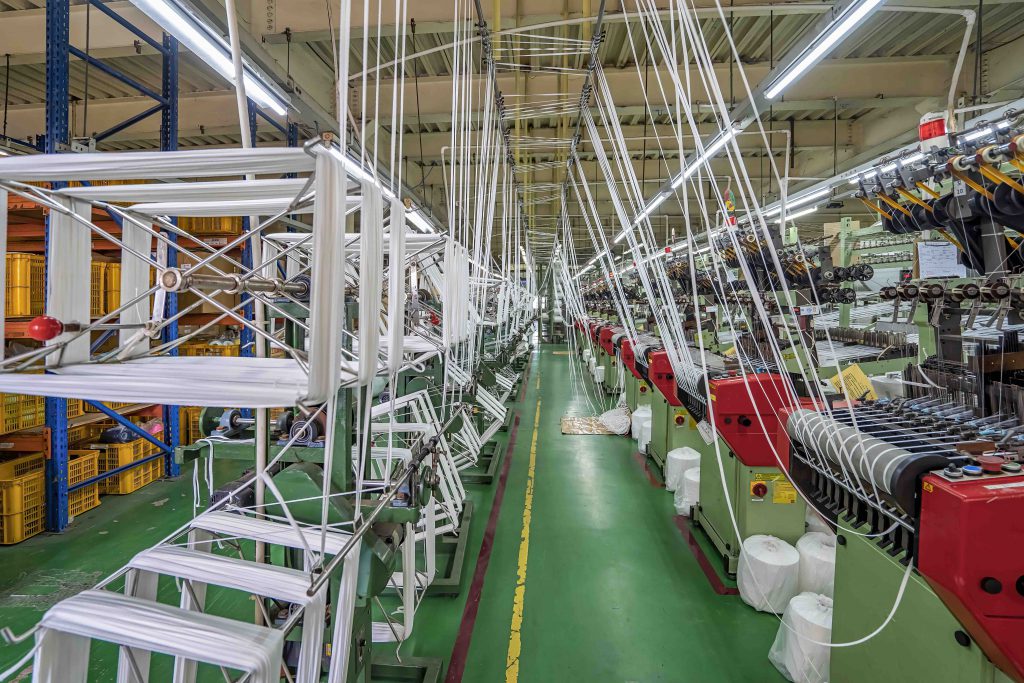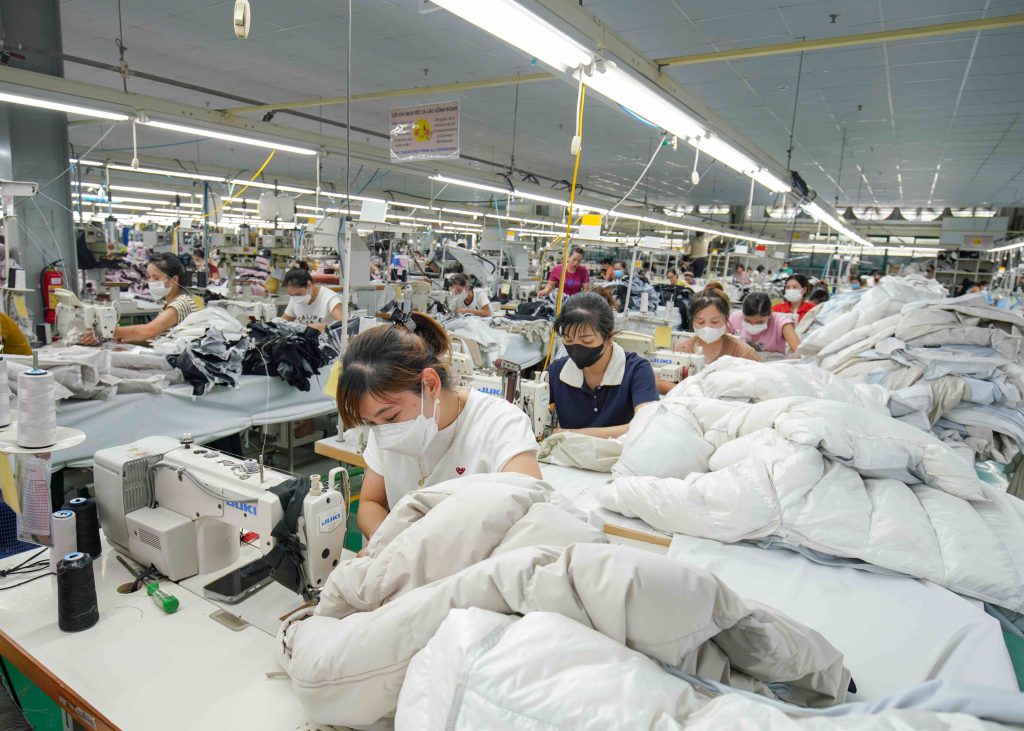Story: Associate Professor Dr. Vu Hung Cuong
Photos: Tonkin, Dao Canh
At the beginning of 2024, Vietnam’s textile export orders have shown growth compared to the previous year, with longer-term commitments replacing the precarious “month-to-month” pattern seen in 2023.
The global textile industry has suffered significant setbacks over the past three years due to the COVID-19 pandemic and its lasting effects. Major textile-exporting countries like China, India, Indonesia, and Vietnam have all faced a shortage of orders, supply chain disruptions, and skyrocketing shipping costs. Consumer demand for apparel in key markets like the U.S. and the European Union has dropped sharply as households curb spending.
These pressures continued into 2023, with Vietnam’s textile industry experiencing a 25% to 27% drop in orders. However, as 2024 began, there were signs of improvement. This optimism, however, is not primarily driven by a recovery in consumer demand but rather by favorable exchange rates and a shift in orders from other countries to Vietnam.

Gradual signs of recovery
According to statistics from the General Department of Customs, Vietnam’s textile export revenue in the first half of 2024 exceeded USD 16.5 billion, a 5.04% increase compared to the same period in 2023. July marked the first month in 2024 where textile exports surpassed USD 4 billion, reaching the highest revenue since August 2022.
Exports to the European Union (one of Vietnam’s major markets, alongside the U.S., Japan, and South Korea) are showing slight recovery, contributing 11.6% of total export revenue, nearly USD 1.9 billion, a 1.6% rise.
In the first half of 2024, Vietnam’s textile exports to six EU markets exceeded USD 100 million each, though the growth varied among them. The Netherlands, the largest consumer of Vietnamese textiles in the EU, led the recovery with exports totaling USD 565.3 million—a 19.97% increase from last year—accounting for 29.7% of total exports to the EU. Belgium reached USD 206.2 million, France USD 206.01 million, and Italy USD 159.29 million. Meanwhile, exports to Spain and Germany reached USD 252.4 million and USD 363.7 million, respectively.
Another positive development is that Vietnam has overtaken China as the top exporter of apparel to the U.S. and is leading the growth among the world’s top three textile-exporting nations.
In the first five months of 2024, Vietnam’s textile exports totaled nearly USD 16 billion, a 5% increase compared to the same period last year, while China recorded USD 66 billion (a 2% decline) and Bangladesh reported USD 21.7 billion, with only a 3.9% rise. In May 2024, Bangladesh’s exports even dropped by 16%, due to internal instability.

Opportunities and challenges ahead
According to the World Trade Organization (WTO), in 2020, Vietnam surpassed Bangladesh to become the world’s second-largest textile exporter. However, from late 2022 to mid-2023, many Vietnamese textile firms had to downscale and lay off thousands of workers due to shrinking export orders. Consumer spending in Vietnam’s key export markets, such as the U.S. and Europe, has yet to recover, leading to low demand and concerns about high inventory levels.
Vietnam’s textile sector faces stiff competition from Bangladesh, which benefits from lower labor costs and a more significant currency depreciation than Vietnam’s. The average wage for garment workers in Bangladesh is USD 95 per month, about one-third of the USD 300 per month in Vietnam. However, Bangladesh’s current political instability may severely affect its production capacity, potentially pushing more orders to Vietnam.
It’s important to note that the increase in Vietnam’s textile export orders in early 2024 is not due to a global surge in demand, but rather from other countries redirecting orders to Vietnam. Additionally, the Vietnamese dong has depreciated by 5% against the U.S. dollar since the start of the year, while competing nations’ currencies have remained stable.
Despite the higher volume of orders, prices remain 20% to 50% lower than pre-COVID-19 levels, and recruitment costs to meet delivery deadlines have eroded profit margins.

Short-term gains, long-term challenges
Vietnamese textile exports to the EU are expected to improve in the second half of 2024, especially during the holiday season. Inflation in key markets like the U.S. and EU has eased from peaks of 9-10% to around 2.6-3.3%, but high interest rates continue to pressure consumer spending, meaning demand is unlikely to fully recover soon.
Vietnam’s role in the textile supply chain remains primarily as a subcontractor, yielding low added value. While the textile industry is still one of Vietnam’s key export sectors, companies cannot rely solely on low labor costs. Going forward, they must focus on product quality, delivery times, sustainable development, digital transformation, and innovation to diversify their products.
To secure a stable workforce and compete in the global market, Vietnam’s textile industry must diversify its markets and product offerings, accept technically challenging orders, and seek smaller, high-value contracts. Relying on mass-produced, low-cost items will not be a sustainable strategy.
Environmental and social responsibility, worker welfare policies, and supply chain transparency are now mandatory standards in major markets such as the U.S., EU, and Japan. Vietnamese textile exporters must meet these requirements while awaiting the development of supporting industries, which will be crucial for them to play a more proactive role in the global supply chain when the market fully recovers in coming years.










